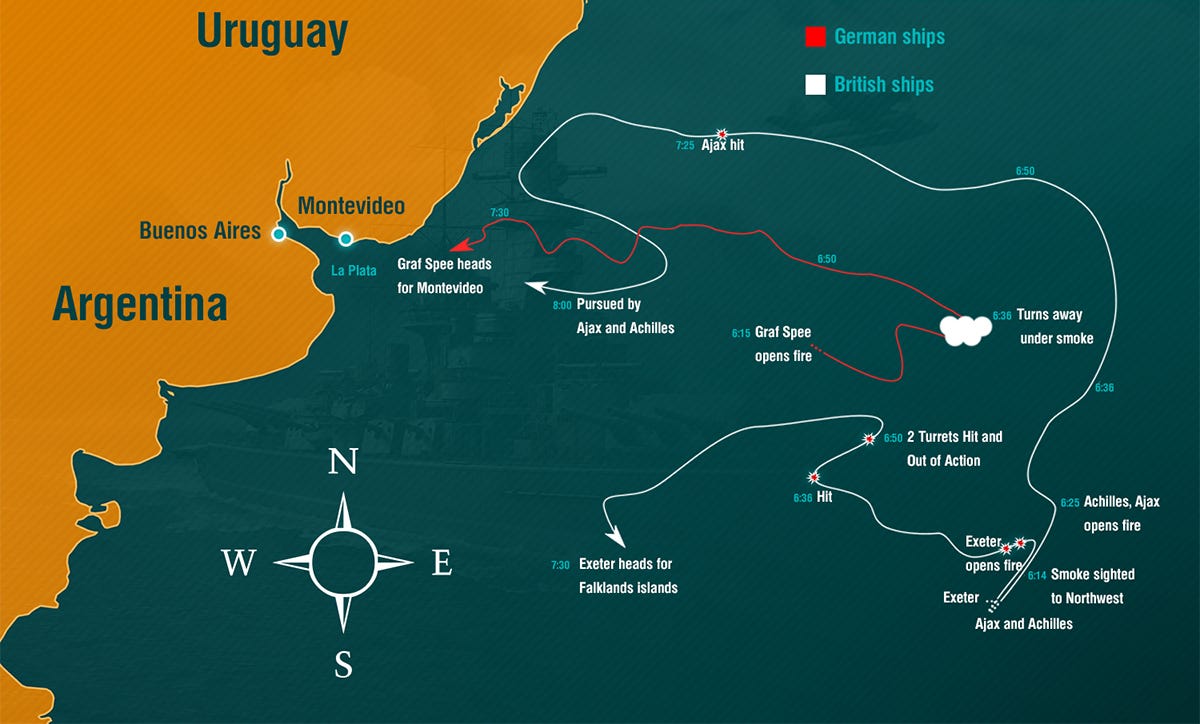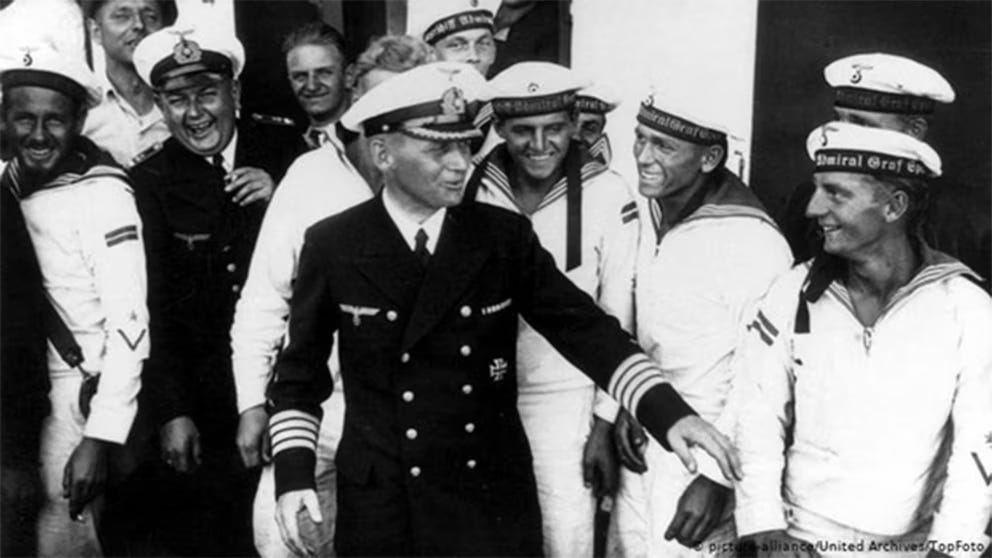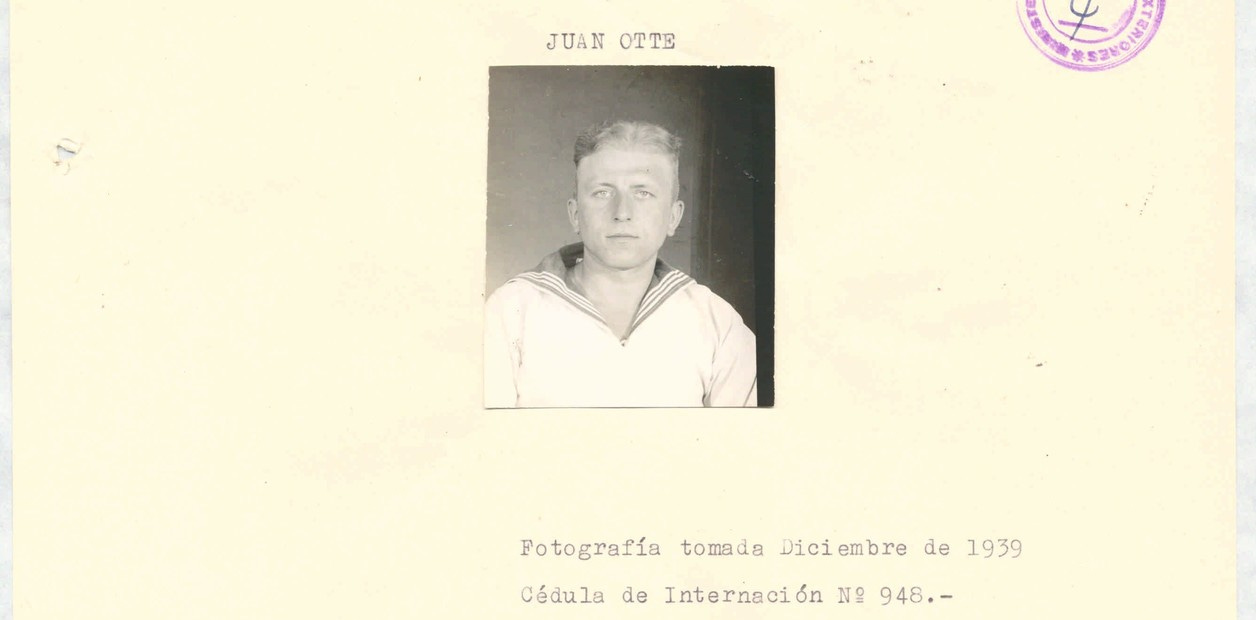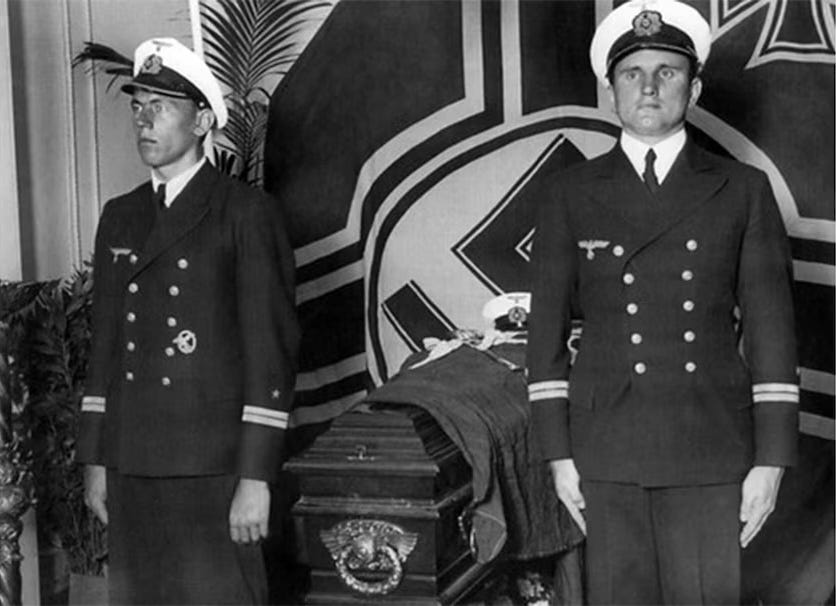The Hunt for Graf Spee
The Battle for the Río de la Plata, when WWII reached Argentina's shores
Welcome Avatar! Time for some history for the holidays: this is the story about a December 85 years ago, when the World War II battles reached the shores of the Río de la Plata, and the captain of a Nazi ship would meet his end in the port of Buenos Aires.
Hans Langsdorff’s life was marked by the name of Graf Spee. When he was still a young boy in the city of Düsseldorf, the stories his neighbour Admiral Maximilian von Spee told him were one of the reasons that would lead him to enlist in the German navy.
That same neighbor would die in a navy battle in the waters around the Falkland Islands on another December, namely on December 8, 1914, during the First World War.
At the start of WWII, Langsdorff would be assigned as the commander of a battleship bearing the name of his late neighbor: Graf von Spee, which was destined for those same Austral waters were Maximilian von Spee had met his demise.
Autist note: for more Argentine history towards the end of WWII and particularly around Peronism offering a safe haven for war criminals in the post-war years, this post in two parts goes into that subject in depth:
On August 21, 1939, the battleship Graf von Spee had set sail from Germany, complying with the armament limitations imposed on Germany in the Treaty of Versailles.
In secret, the ship was armed to the teeth, and its mission was to attack merchant ships in the Atlantic, without confronting other military vessels.
When the war officially broke out on September 1, 1939, just little over a week after the Graf Spee had set sail, the battleship was still navigating the Atlantic.
Up until that point in time, the Graf Spee had sunk a total of nine ships, but after capturing and sinking the merchant ship Clement, the English navy started to actively pursue the Nazi battleship.
The Battle of the Río de la Plata
The Graf Spee was supposed to return to Germany in November that same year, but since the Allies were hot in pursuit, commander Langsdorff decided to deviate orders to try to avoid clashing with British ships: the Exeter, the Ajax, the Achilles and many others were still on the trail.
On December 7, 1939, Langsdorff captured a ship that had left the port of Buenos Aires with five thousand tons of grain, headed for Great Britain. This would be the last trophy the Graf Spee would collect.
A week later on December 13, around six in the morning, a warship was sighted from the Graf Spee. Langsdorff interpreted that it was an escort for a merchant ship, but it was the Ajax, accompanied by the Achilles, both navigating just 290 miles east of the Río de la Plata area between Buenos Aires and Montevideo.
Autist note: you can read more about other historic battles in the Río de la Plata here:
The battle started between the Graf Spee and the Exeter. The Nazi ship caused serious damage to the Exeter, despite the latter firing torpedoes continuously, which were dodged by Langsdorff and his crew. The Achilles also started firing and finally hit the German ship.
The Graf Spee zigzagged, taking cover in black smoke, and it seemed like victory for the British fleet was sealed. Surprisingly, the Allies retreated and Langsdorff, instead of pursuing them, headed for the Río de la Plata, which would eventually be his death trap.
Langsdorff speculated that he would be able to repair his ship in Montevideo, to then go out and finish off the British fleet. The battle had left a toll of 35 dead and 60 wounded, many of them operated on on board without anaesthesia. Around 11pm the Graf Spee entered the port of the Uruguayan capital.
Langsdorff, with a severe wound on his left arm and forehead bandaged, met with the German minister Otto Langmann, who warned him that Uruguay would not allow him to stay more than two days. Unfortunately, Langsdorff would need at least two weeks to fix his ship.
The British ships were joined by the Cumberland, which had sailed at full speed from the Falklands to assist.
On December 15, the Uruguayan authorities allowed Captain Langsdorff to bring his 36 war dead ashore and they were buried in the Cementerio Del Norte in Montevideo. The captain accompanied his dead to the cemetery and was the only one who did not make the Nazi salute — even the priests did — but rather the traditional naval one.

Upon his return to the Graf Spee, Langsdorff was informed of the ultimatum from the Uruguayan government: he was to leave the Montevideo port within 72 hours.
In other words, the damaged Graf Spee would have to confront three English ships waiting to take it down. Unbeknownst to the British and to make matters worse for the Graf Spee crew, the Germans were almost out of ammunition.
Langsdorff communicated his intention to reach Buenos Aires to the authorities in Berlin — he knew Argentina at that time had more sympathies for the Axis — and requested permission to sink the battleship if he failed to do so. He also asked if he should be at the mercy of the Uruguayans. There was not much room for manoeuvre given the pro-Allied character of Uruguay’s government.
On 16 December, the high naval command consulted Hitler and the Admiralty's proposal was to give the captain freedom of action. The dictator approved the idea of leaving Montevideo.
Sinking the Graf Spee
At two o'clock in the morning on December 17, Langsdorff told his officers that his plan was to blow up the ship, and no one was to suspect a thing.
The German merchant ship Tacoma docked next to the Graf Spee, and tarpaulins were put up on the sides so that no one from ashore could see what was happening.
Around 6pm the Graf Spee began to leave the port of Montevideo, a large crowd closely following its wake. It looked like the battleship set course for Buenos Aires, until it suddenly shut off its engine.
No one had noticed that there were only 43 crew members left on the battleship, and that the other thousand sailors were already on the Tacoma. Langsdorff and his men placed six torpedo heads at different points on the battleship to be detonated in twenty minutes.
The last men on the Graf Spee lowered the flag and boarded the Tacoma — Langsdorff was the last to get off. The battleship was blown to pieces shortly after.

From the Tacoma, Langsdorff and his men boarded Argentine-flagged tugs and the next morning, they disembarked in Buenos Aires, greeted by Ambassador von Thermann.
Graf Spee Prisoners
The 1,055 crew arrived in Buenos Aires, where Langsdorff attempted to secure their classification as shipwreck mariners instead of internees. This was a status halfway between prisoner of war and having freedom of movement.
Most of the Graf Spee crew was confined in Villa General Belgrano, in the province of Córdoba.
Since their status only meant that they had to report at those locations, but still had freedom of movement, several sailors began relationships and had children with Argentine women. Many got married or fled their confinement completely to do so.
In the discussions about the release of the internees, there was no shortage of letters from the wives themselves and even from the mothers-in-law requesting the Argentine authorities to release their German sailor:

At the end of WWII, some 800 crew members who were still in Argentina were deported to Germany, but many managed to return on their own.
By 1948, the United States established that Graf Spee sailors residing in the US occupation zone in Germany who had married Argentine women were permitted to return.
The last Graf Spee survivor who had settled in Argentina died in 2013, at the age of 93.
Langsdorff’s Final Moments
Langsdorff made a tough decision in the early hours of his journey from Montevideo to Buenos Aires after blowing up the Graf Spee.
After arriving in Argentina on December 19, he wrote three letters in his room at the Argentine Navy arsenal in Dársena Norte, addressed to the German ambassador in Buenos Aires, to his parents and to his wife:
“I alone am responsible for the sinking of the battleship Admiral Graf Spee. I am happy to be able to avoid, paying with my life, any reproach that could be made to the honour of the flag. I will go to meet my destiny with unwavering faith in the cause and future of the Fatherland and of my Führer.”
At the break of dawn, on December 20, he unfurled the same flag that had flown on the Graf Spee over his bed. Dressed in full uniform, he laid down and shot himself in the head.
The Navy held the wake then and there, and the German ambassador read a telegram from Hitler. The funeral procession went through the city to his final resting place at Chacarita cemetery.
His widow visited his grave in 1954, reaffirming her wish that Langsdorff's remains would remain in Argentina. She did request that the swastika that adorned the grave be removed.
Hans Langsdorff’s grave can still be visited at the German Cemetery in Chacarita.
See you in the Jungle, anon!
Other ways to get in touch:
1x1 Consultations: book a 1x1 consultation for more information about obtaining residency, citizenship or investing in Argentina here.
X/Twitter: definitely most active here, you can also find me on Instagram but I hardly use that account.
Podcasts: You can find previous appearances on podcasts etc here.
WiFi Agency: My other (paid) blog on how to start a digital agency from A to Z.
















Langsdorff was born in the same hospital like me in Bergen auf Regen, Germany's largest island in the Baltic Sea.
Pretty fascinating story and I think Langsdorff is a good example that not all Germans at this terrible times were on the dark side. With his actions, he probably saved the lifes of hundreds of German and British sailors.
Very well researched article as well, I learned a few new details. 👍🏻
Good work mate......